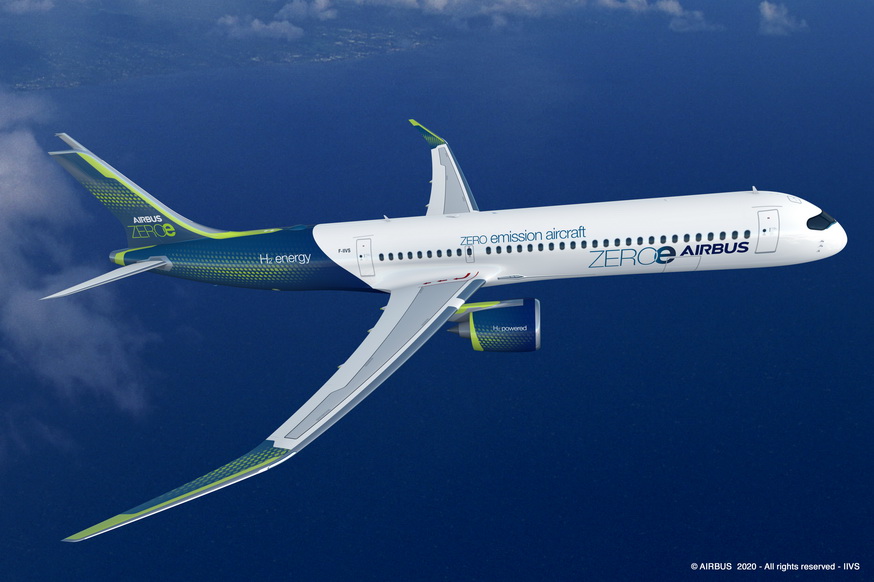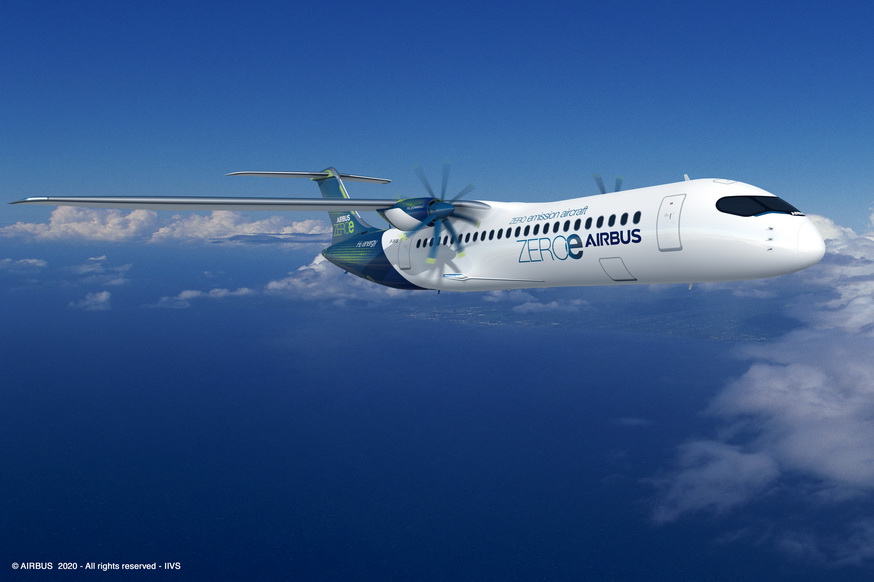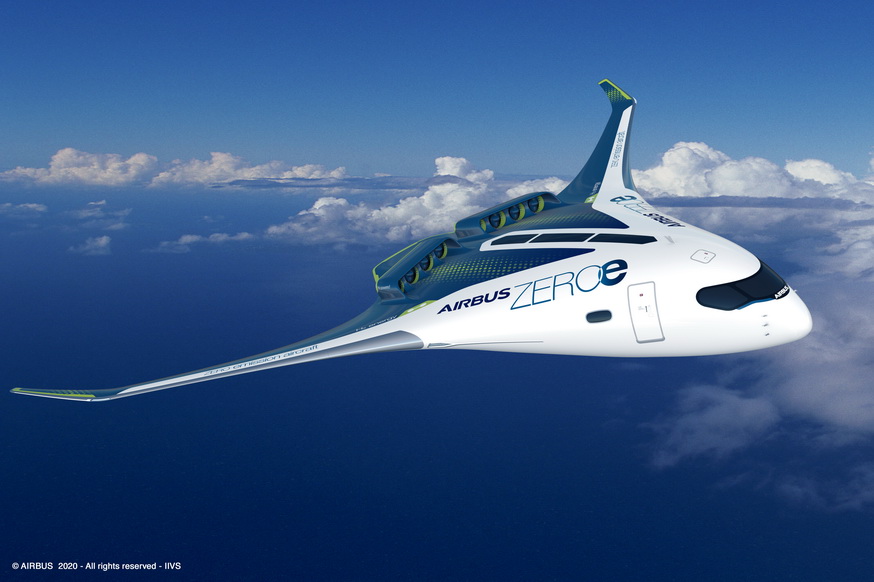Airbus has revealed three concepts for the world’s first zero-emission commercial aircraft which could enter service by 2035. These concepts each represent a different approach to achieving zero-emission flight, exploring various technology pathways and aerodynamic configurations in order to support the Company’s ambition of leading the way in the decarbonisation of the entire aviation industry.
All of these concepts rely on hydrogen as a primary power source – an option which Airbus believes holds exceptional promise as a clean aviation fuel and is likely to be a solution for aerospace and many other industries to meet their climate-neutral targets.
“This is a historic moment for the commercial aviation sector as a whole and we intend to play a leading role in the most important transition this industry has ever seen. The concepts we unveil today offer the world a glimpse of our ambition to drive a bold vision for the future of zero-emission flight,” said Guillaume Faury, Airbus CEO. “I strongly believe that the use of hydrogen – both in synthetic fuels and as a primary power source for commercial aircraft – has the potential to significantly reduce aviation’s climate impact.”
The three concepts – all codenamed “ZEROe” – for a first climate neutral zero-emission commercial aircraft include:

A turbofan design (120-200 passengers) with a range of 2,000+ nautical miles, capable of operating transcontinentally and powered by a modified gas-turbine engine running on hydrogen, rather than jet fuel, through combustion. The liquid hydrogen will be stored and distributed via tanks located behind the rear pressure bulkhead.

A turboprop design (up to 100 passengers) using a turboprop engine instead of a turbofan and also powered by hydrogen combustion in modified gas-turbine engines, which would be capable of traveling more than 1,000 nautical miles, making it a perfect option for short-haul trips.

A “blended-wing body” design (up to 200 passengers) concept in which the wings merge with the main body of the aircraft with a range similar to that of the turbofan concept. The exceptionally wide fuselage opens up multiple options for hydrogen storage and distribution, and for cabin layout.
“These concepts will help us explore and mature the design and layout of the world’s first climate-neutral, zero-emission commercial aircraft, which we aim to put into service by 2035,” said Guillaume Faury. “The transition to hydrogen, as the primary power source for these concept planes, will require decisive action from the entire aviation ecosystem. Together with the support from government and industrial partners, we can rise up to this challenge to scale-up renewable energy and hydrogen for the sustainable future of the aviation industry.”
In order to tackle these challenges, airports will require significant hydrogen transport and refuelling infrastructure to meet the needs of day-to-day operations. Support from governments will be key to meet these ambitious objectives with increased funding for research & technology, digitalisation, and mechanisms that encourage the use of sustainable fuels and the renewal of aircraft fleets to allow airlines to retire older, less environmentally friendly aircraft earlier.
Toulouse, 21 September 2020
Airbus zero-emission commercial aircraft models achieve key capabilities, says GlobalData
Following the announcement that Airbus plans to introduce zero-emission commercial aircraft models by 2035, Harry Boneham, Aerospace and Defense Associate Analyst at GlobalData, a leading data and analytics company, offers his view:
“This announcement signals that Airbus recognizes the environmental impact of commercial aviation and is realigning to conform to a market in which consumers demand climate responsibility. It has been identified that zero-emission aircraft with a range of up to 1,200nm will reduce airport NOx emissions by 60%, reduce fuel use and direct CO2 emissions by 40%, and account for 80% of all departures. Given that the capabilities of these models exceed this threshold, Airbus has positioned itself in a commanding position for the medium and long-term market.
“The three concept designs include a turbofan design, a turboprop design and a blended wing design. Of these models, the turbofan and blended wing designs have a passenger capacity of around 200 and a range of approximately 2000nm, while the turboprop design can hold up to 100 passengers and has a range of approximately 1000nm.
“Additionally, that the passenger capacity is comparable to contemporary narrow-body aircraft such as the A320neo and B737 MAX, is also encouraging. This will make for an easier transition from these older models to the zero-emission designs, as it will be a straight swap with little adaptation to fleet size and flight frequency necessary. In order not to lose market share, particularly in the narrow-body segment, Boeing must now develop its own low emission offerings. Ultimately, these developments are positive for the industry, pushing it in a direction which is sustainable and aligns with shifting passenger demand.”



